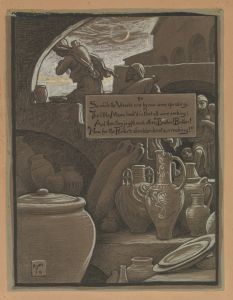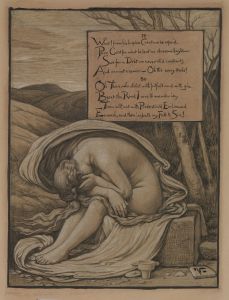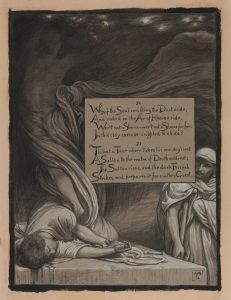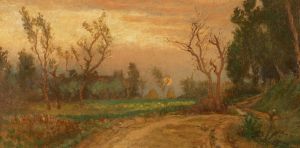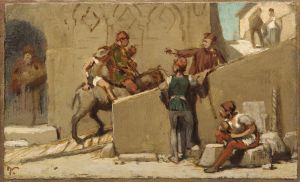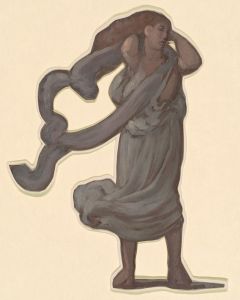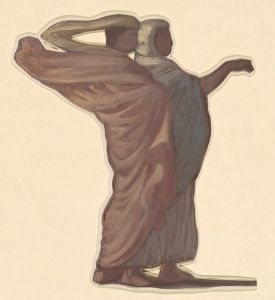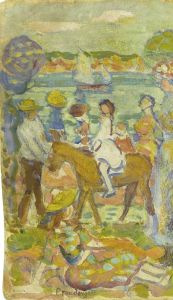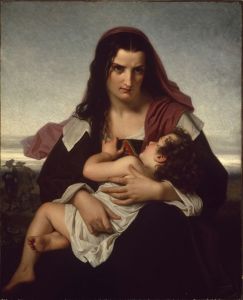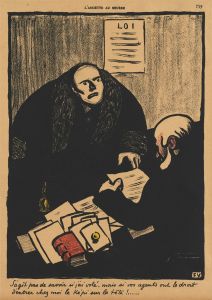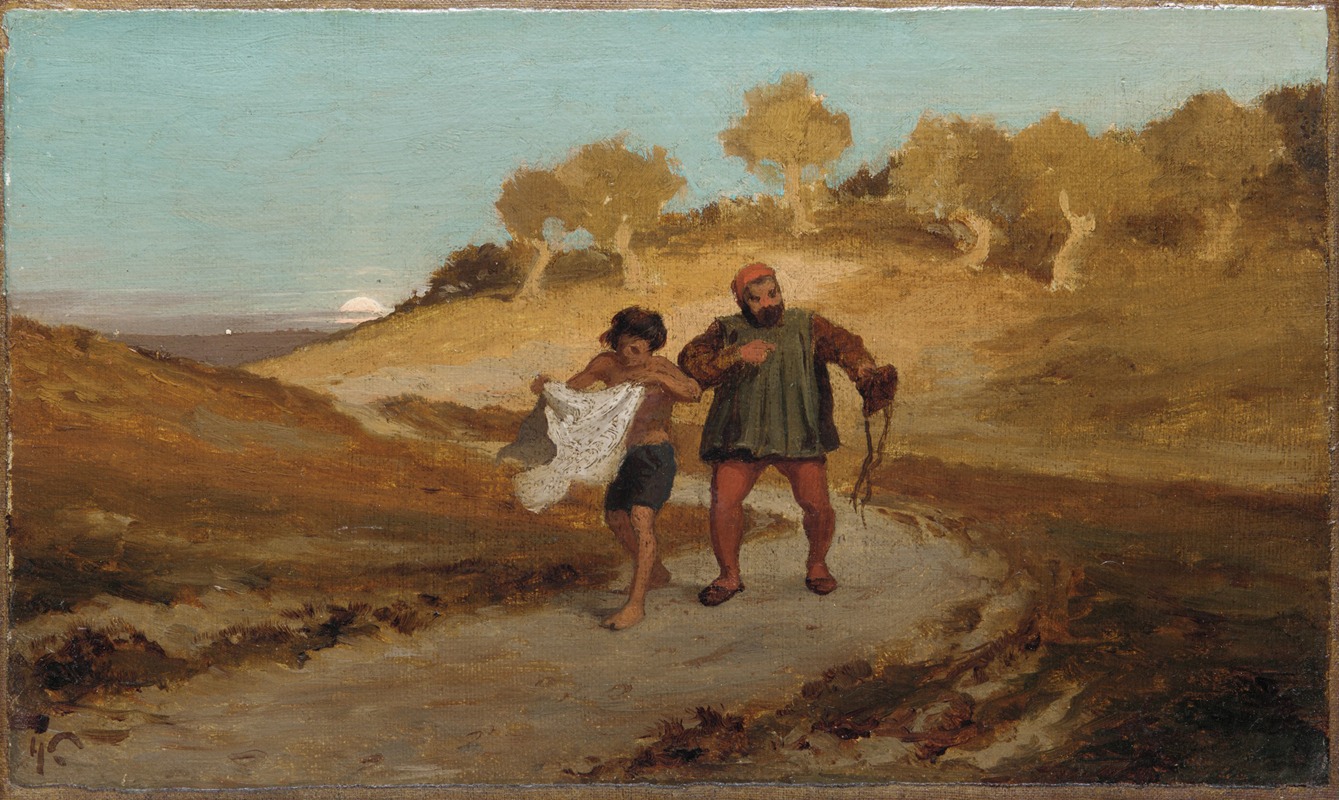
The Fable of the Miller, His Son, and the Donkey No. 8
A hand-painted replica of Elihu Vedder’s masterpiece The Fable of the Miller, His Son, and the Donkey No. 8, meticulously crafted by professional artists to capture the true essence of the original. Each piece is created with museum-quality canvas and rare mineral pigments, carefully painted by experienced artists with delicate brushstrokes and rich, layered colors to perfectly recreate the texture of the original artwork. Unlike machine-printed reproductions, this hand-painted version brings the painting to life, infused with the artist’s emotions and skill in every stroke. Whether for personal collection or home decoration, it instantly elevates the artistic atmosphere of any space.
Elihu Vedder was an American symbolist painter, known for his imaginative and often allegorical works. One of his notable paintings is "The Fable of the Miller, His Son, and the Donkey No. 8," which is part of a series of illustrations inspired by the well-known fable. This fable, often attributed to Aesop, tells the story of a miller and his son who, in an attempt to please everyone they encounter, end up losing their donkey. The moral of the story is that trying to satisfy everyone can lead to one's own detriment.
Vedder's interpretation of this fable is a reflection of his interest in symbolism and narrative art. The painting captures the essence of the story, illustrating the folly of attempting to conform to the opinions of others. Vedder's style is characterized by a blend of realism and fantasy, which is evident in the way he portrays the characters and the setting. His use of color and composition adds depth to the narrative, inviting viewers to engage with the moral lesson of the fable.
Elihu Vedder was born in New York City in 1836 and spent a significant part of his career in Italy, where he was influenced by the Renaissance and classical art. His work often explores themes of mythology, literature, and philosophy, and he was associated with the American Renaissance movement. Vedder's paintings are known for their intricate detail and symbolic content, which often require viewers to look beyond the surface to understand the deeper meanings.
"The Fable of the Miller, His Son, and the Donkey No. 8" is part of Vedder's broader body of work that includes illustrations for literary texts, such as his famous illustrations for Edward FitzGerald's translation of "The Rubaiyat of Omar Khayyam." This particular painting, like many of Vedder's works, reflects his fascination with storytelling and the human condition.
Vedder's contribution to art extends beyond his paintings; he was also a poet and a writer, which further enriched his visual storytelling. His works are held in various collections, including major museums in the United States, where they continue to be studied and appreciated for their artistic and historical significance.
Overall, Elihu Vedder's "The Fable of the Miller, His Son, and the Donkey No. 8" is a testament to his skill as a painter and his ability to convey complex narratives through art. The painting remains an important example of 19th-century American art and continues to be a subject of interest for art historians and enthusiasts alike.





